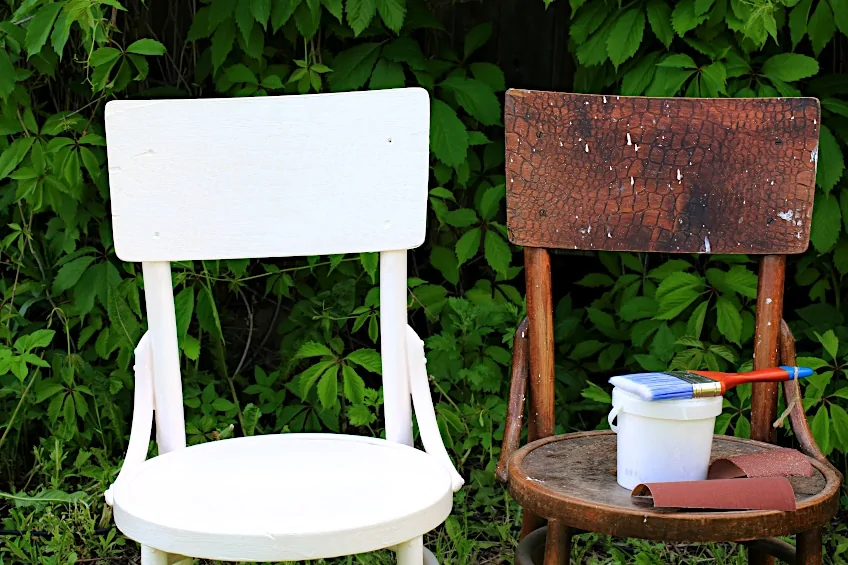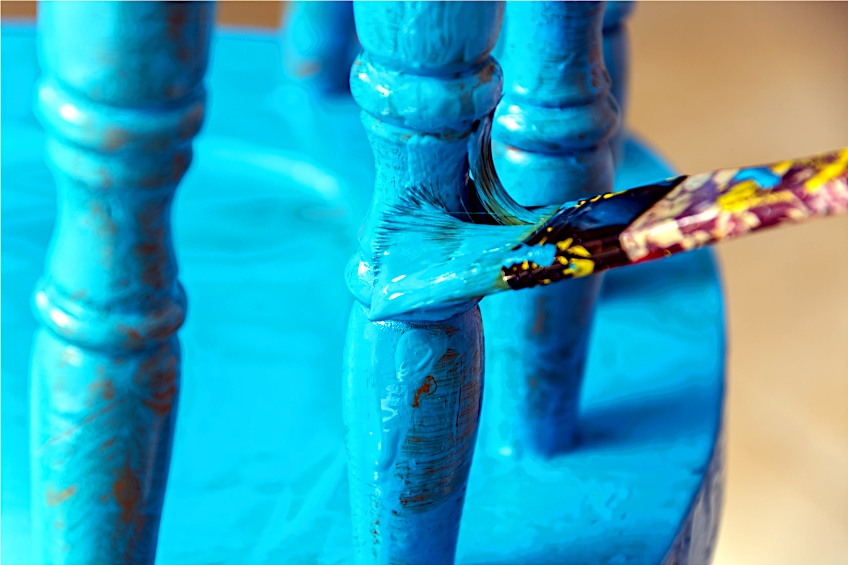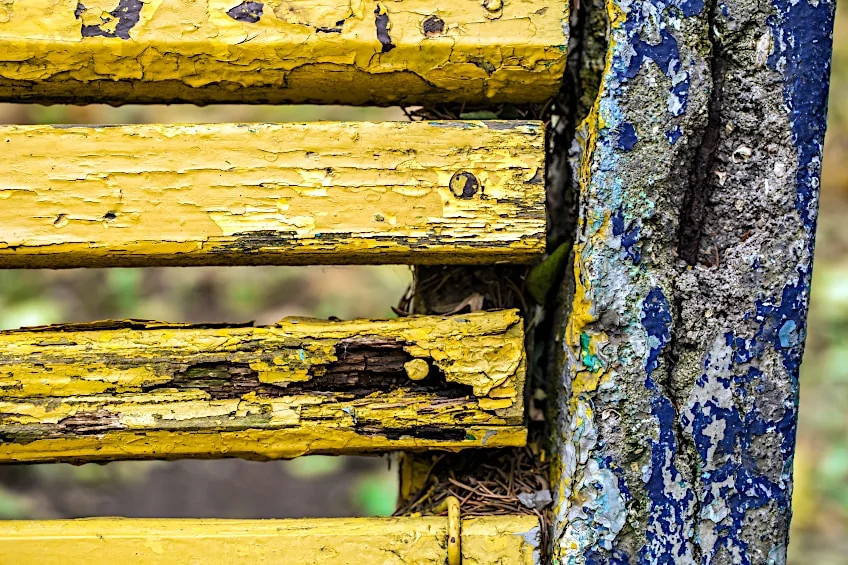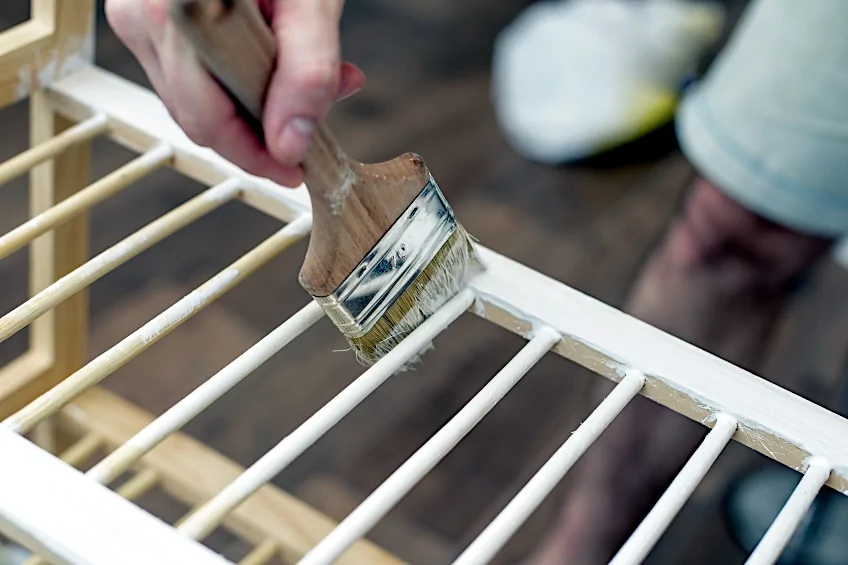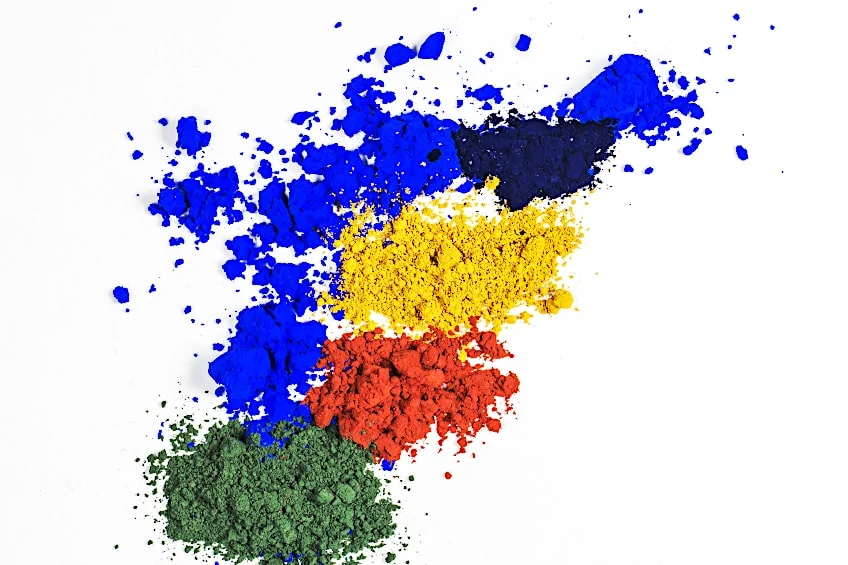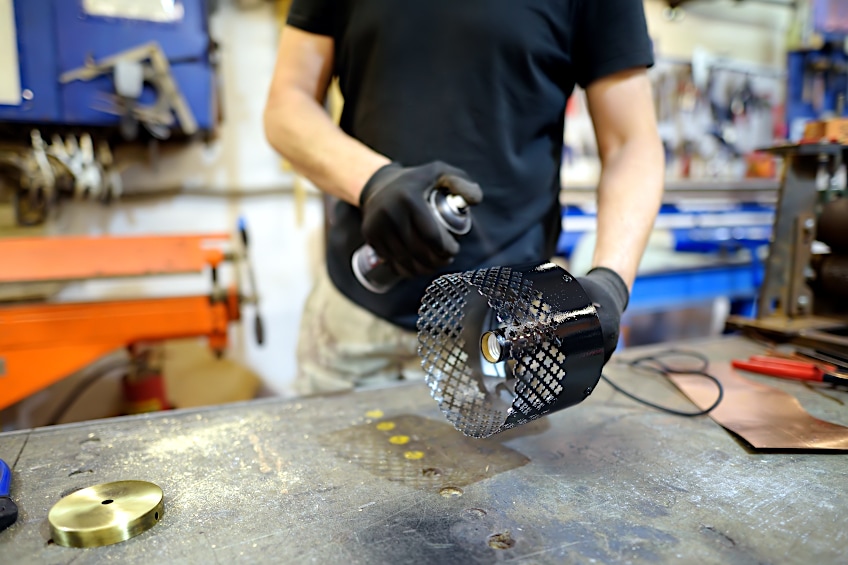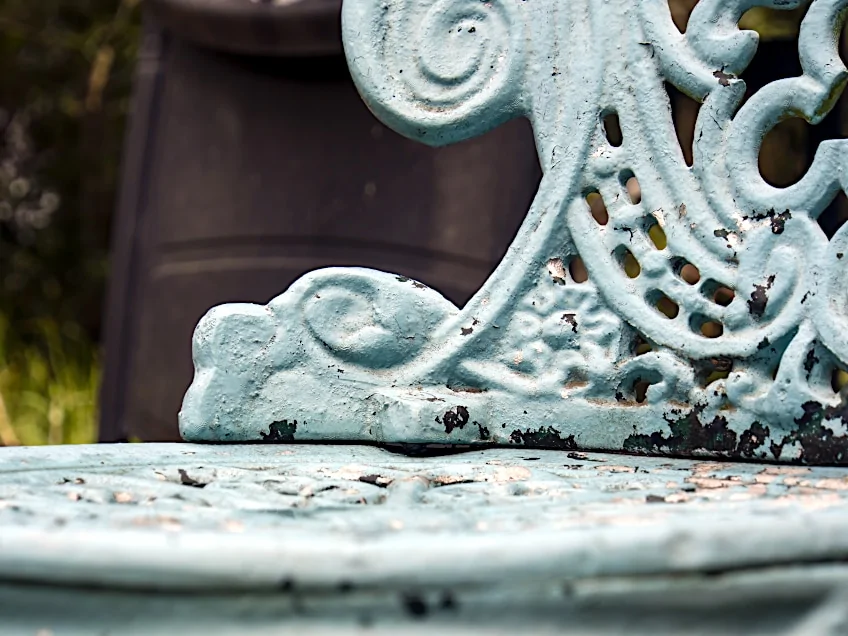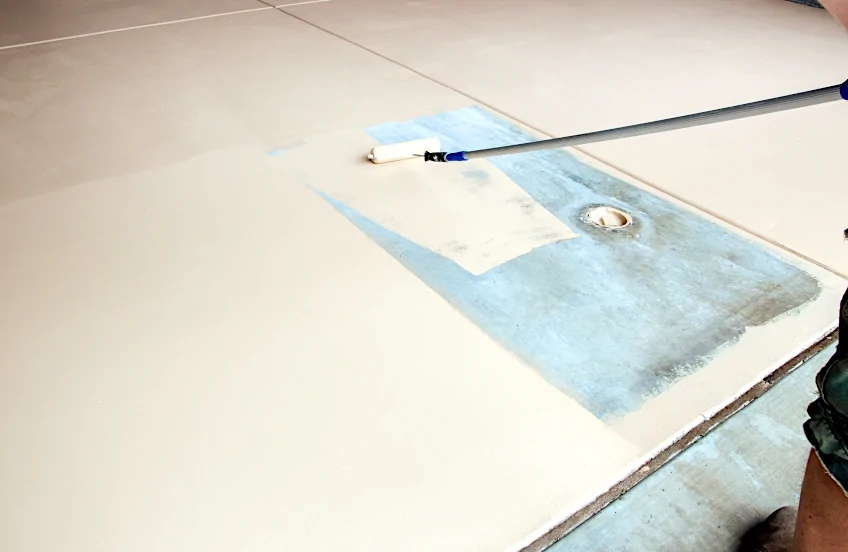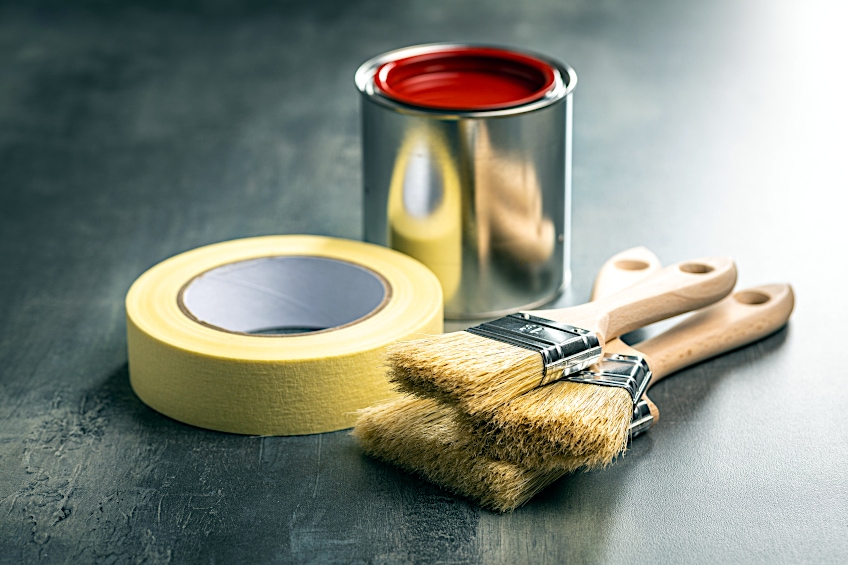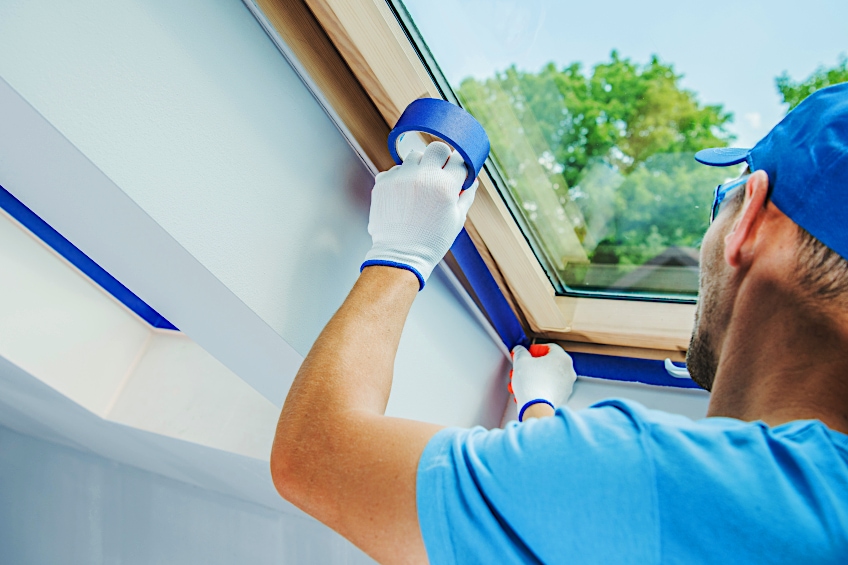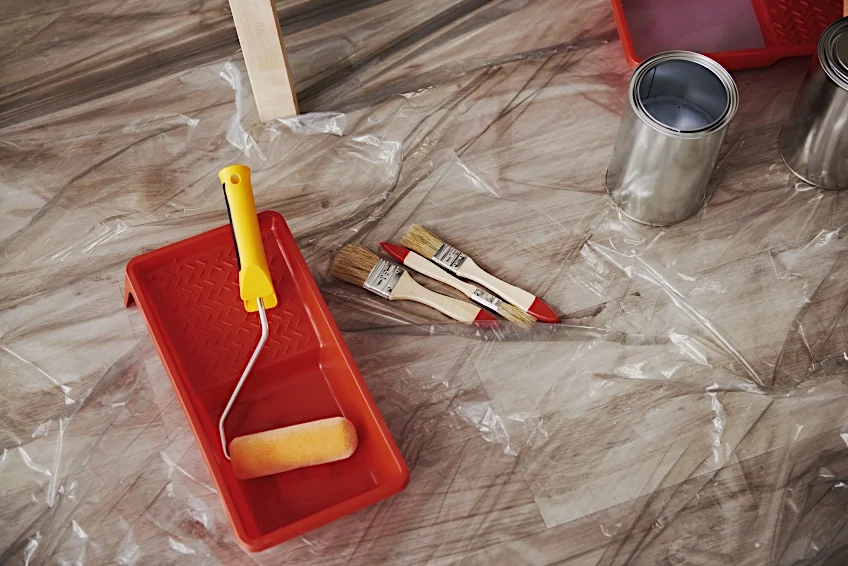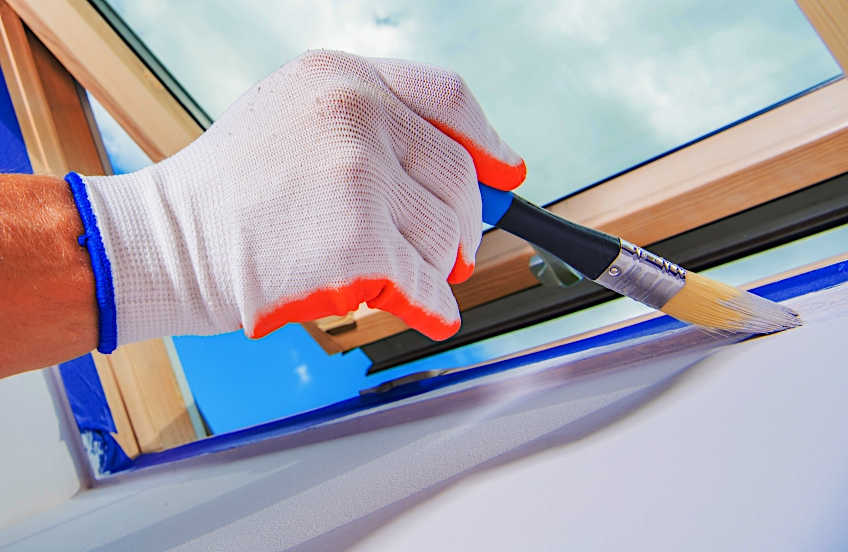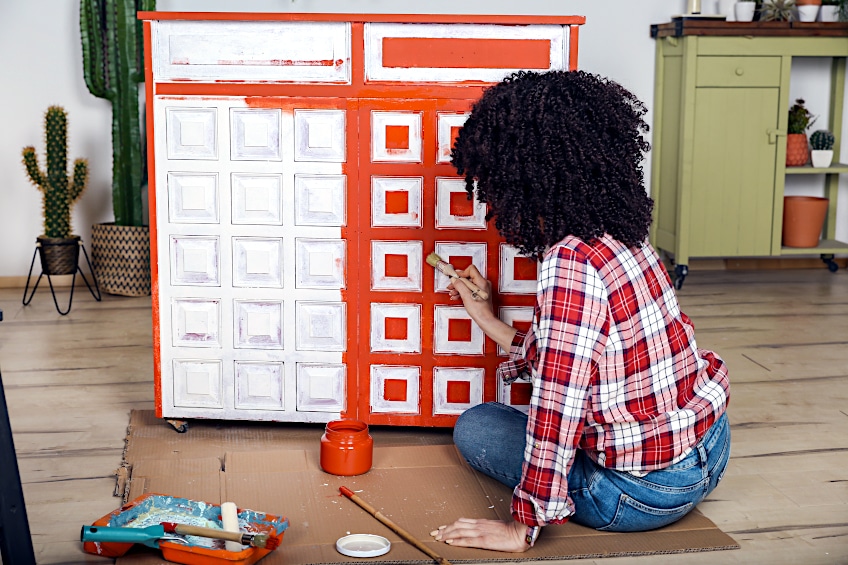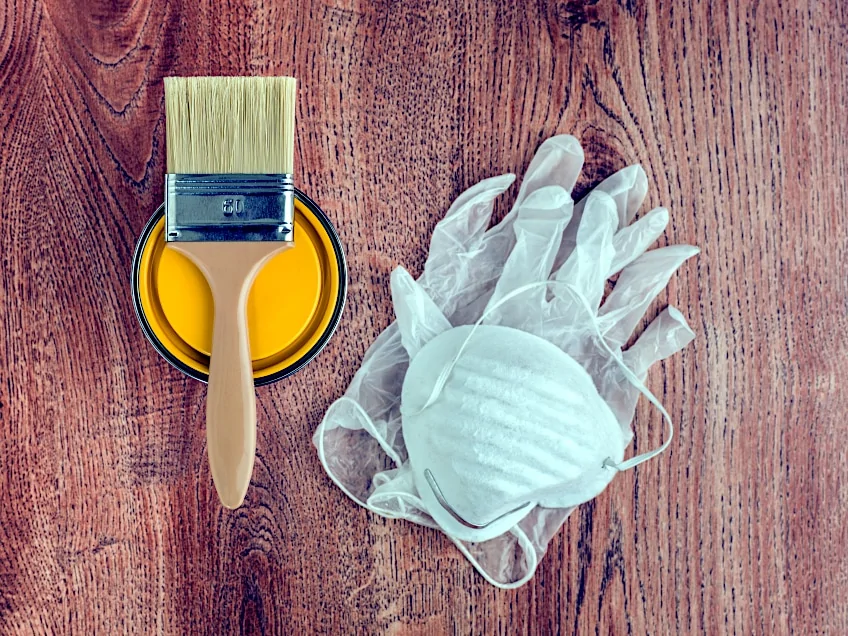What Is Enamel Paint? – Why and How to Paint with Enamel
This post may contain affiliate links. We may earn a small commission from purchases made through them, at no additional cost to you. You help to support resin-expert.com
It’s always exciting to change the style of your living space, and painting is a great way to get started. But, you’ve just realized that you need to paint more than just your walls. You want to repaint your doors and windows. Your trim is scuffed and chipped, as are the built-in storage cabinets. And some of your wood, plastic, and metal fittings and furniture need a makeover too. To make this possible, you may consider using enamel paint. Educating yourself on everything you can about enamel paint is the first step in making sure that you get everything right on your new projects.
Table of Contents
What Is Enamel Paint?
Enamel paint is an extremely durable type of paint that may be used on both the outside and inside of a building. No matter which enamel paint manufacturer you pick, the vast majority of enamel paints are oil-based, with a few notable outliers that are water-based. Enamel paint can be used to paint a variety of surfaces, ranging from the wood trim within your house to the flat surfaces present on metal patio furniture.
Types of Enamel Paints
There are two types of enamel paints: Oil-based and water-based enamel paints. The solvent is what differentiates these two paints. However, certain factors like durability, method of application also differ between these paints.
Oil-Based Enamel Paint
Oil-based enamel paint has oil as its base. These paints have a drying time ranging anywhere from 8 to 24 hours. The oil-based enamel paint dries from inside out. Although it has an unpleasant smell, it is easy to remove using paint thinners. Because of the toxic fumes emitted by this kind of paint when used inside, ensure that the area is well ventilated while applying it.
Water-Based Enamel Paint
Compared to oil-based paints, water-based paints have a water base. The drying time of water-based enamel is much less than that of oil-based enamel. These water-based paints often take approximately eight hours or less to thoroughly dry. They start drying out from the inside and even though it seems dry to the touch, it is extremely difficult to tell whether or not it is completely dry on the outside. In addition, it is less difficult to clean as well as remove because it can be wiped away with water.
Differences Between Water-based and Oil-Based Enamel Paint
There are several differences between water-based enamel and oil-based enamel, including the solvents used, the longevity of the enamel, the shine of the enamel, and the surface conditions on which they are employed.
The Solvent
When it comes to enamel paint, the fundamental difference between oil-based and water-based is the solvent that is used in its production. Several different kinds of solvents are utilized to get the desired outcome, and they all evaporate as soon as the paint has dried completely.
Oil-based enamel paints make use of mineral turpentine as their solvent, whilst water-based enamel paints make use of oil to create its enamel.
Sheen Effects
Oil-based paints have a higher gloss look, and the after-effects are more eye-catching than water-based paints. However, it has been observed that after a given period, the sheening effects of the paint diminish and the paint seems bland. Water-based, on the other hand, have a modest sheen and retain their sheen level for a much longer period.
Durability
Oil-based paints dry more slowly than water-based paints, but they also provide incredible resilience to wear and strain over time. In exchange for drying more quickly, it loses its suppleness and becomes powdery as well as brittle, which makes it less durable. The outcome demonstrates that the paint has cracked.
Water-based paint will set hard, but it will be able to withstand whatever damages and will even be able to withstand normal wear and tear over time. The result is that water-based paint is much more adaptable to changes and, as a result, highly flexible. They have a high tolerance for dampness.
Conditions of the Surface
Because they repel water, oil-based enamel paints have a tough time forming a strong connection with the surfaces they are applied to. As a result, it is critical to allow a surface to dry before applying these products. The absorption of humidity, as well as moisture by water-based enamel paints, eliminates the requirement for thorough drying of the wall before use.
Application Process
Oil-based enamel paints are thicker and leave a sticky residue on the surface of the paintbrush. Because of the unique character of professionals, it takes time for them to complete their applications. Sensitive individuals may get headaches and skin irritations as a result of the terrible odor that it emits.
Water-based paint can be applied quickly and simply, and it dries far more quickly than oil-based paint. Because it contains less volatile organic compounds (VOCs), its odor is not overpowering. Because water may be used to clean brushes and spills, the cleaning procedure is significantly simpler compared to oil-based enamel paints.
The table below shows a general distinction between oil-based and water-based enamel paints:
| Differences | Oil-Based Enamel Paint | Water-Based Enamel Paint |
| Solvent | Oil-based, mineral turpentine | Water-based solvent |
| Gloss | Gloss, Semi-gloss finish | Gloss and Semi-gloss finish |
| Interior/Exterior | Suitable for interior walls | Suitable for interior and exterior walls |
| UV resistance | Low-level UV resistance | High-level UV resistance |
| Alkalis resistant | Not resistant to alkalis | Resistant to alkalis |
| Drying time | 8 hours | 30 minutes to 4 hours |
| Brilliant gloss finish | ✔ | ✘ |
| Flammable | ✔ | ✘ |
| Colors | Few colors available | Wide range of colors available |
What Is Enamel Paint Made Of?
Enamel paint is primarily utilized in applications where a glossy finish is required, such as on furniture. Enamel paint typically comprises six components. These are base, binder, inert filler, solvent, coloring pigments as well as additives
The Base
As a substrate for enamel paint, a variety of different components may be employed. White lead or red lead are utilized as the primary pigments in certain paints. As a basis, some producers utilize zinc oxide or iron oxide, while others use aluminum oxide. Other manufacturers, on the other hand, employ a lithophone as the foundation.
Binder
Linseed oil is often utilized as a binder in this process. Some manufacturers, on the other hand, employ alkyd resin, epoxy resins, or alkyd resin as binders in their products.
Inert Filler
Generally speaking, colored particles are utilized as extenders or inert fillers in the majority of enamel paints.
Solvent
In most enamel paint recipes, there is a solvent or a thinner included. Enamel paint is often made using varnish or white spirit as a binder.
Coloring Pigments
The coloring pigments are made from a fine powder of mineral color pigments that have been ground to a fine powder.
Additives
As drying additives or pigments, a variety of materials such as cobalt, lead, manganese, copper, zirconium, and other metals may be used, for example.
What Surfaces Does Enamel Paint Work On?
Enamel paint can be applied to a wide variety of surfaces, if not all of them. For example, you can use enamel paint on metal surfaces, wooden surfaces, concrete surfaces, and many more. Therefore, if you have a wooden seat outside your house that you are using, the enamel will adhere to that as well. If you’ve got rubber tire swings that require extra color, you can also coat this with enamel spray paint to give it a nice shine.
Enamel spray paint is an oil-based paint that can be used on many surfaces and you get a finish that is both durable and shiny. Enamel spray paint Enamel is an excellent choice for a wide range of jobs all around the house.
Pros and Cons of Using Enamel Paint
Enamel paint is used for a lot of things and can be used on many surfaces. Some of the uses of enamel paint include painting window sills, floors, doors, and covering metal. However, using enamel paint has its own pros and cons which are explained below.
- It is easy to use
- Extremely durable
- A large number of colors are available
- Can be used on multiple surface types
- Suitable for interior and exterior applications
- Appealing finish
- Potentially toxic
- Clean-up when using oil-based enamels can be messy
- Longer dry-times for oil-based enamels
Uses for Enamel Paint
Enamel has several unique properties that make it a superior option for a variety of projects. When enamel paint dries, it hardens into a stiff coating. As a consequence, it is an excellent option for projects that need the use of certain types of paint. So, what is enamel paint used for? The following are some examples of projects in which enamel paints may be used.
Casing Doors and Windows
The fact that your doors and windows are some of the most frequently used items in your house may mean that coating them with enamel paint may help to ensure that they do not wear down as quickly. Because enamel paint is quite robust, it will guarantee that they endure for a long period.
Covering Metal
Metal is an excellent surface for enamel paints to adhere to. It is possible to apply the paint on both indoor and outdoor furniture with the same results. When using this kind of paint, you need also to make sure that the sandpaper you use is about 120 grit or higher on the metal surface you are painting.
Glossing the Floor
In the garage, enamel may be used to coat the flooring, which is very useful. The enamel adheres effectively to concrete floors and leaves a glossy coating that makes it easy to wipe up spills from your automobile while also guaranteeing that the baseboards are properly protected. Enamel paint is very robust, and as a result, it will endure for an extremely long period.
Refinishing Cabinets
Cabinet refinishing may be accomplished using enamel paint. In the case of kitchen cabinets that need refinishing, enamel paint is a long-lasting solution that will give your cabinets a glossier appearance while also being more durable.
How to Paint With Enamel
Knowing how to paint with enamel is essential if you are planning on using enamel paint to decorate the interior of your home. You need to ensure that the surfaces are properly prepared for the paint to adhere properly to the surface. The following are the tips and tricks for using enamel that will ensure that you get the best possible results from your endeavors.
Prep the Metal
The chemical adhesion of paint, as well as the mechanical adhesion of paint, allow it to easily adhere to and pass-through objects. You will need to make certain that the metal surfaces have been properly sanded to improve mechanical adhesion. Making use of 120-grit sandpaper is essential to achieve the desired results. Additionally, scuffing pads can be used to rough up the surface texture. Scuffing metallic surfaces should be discontinued when the surfaces are no longer shiny.
Remove Fittings
If you are planning on painting your interior doors, you will need to remove and set aside all of the items that will not be painted while you are doing so. If you do not intend to remove them, you will need to be extra cautious when painting to ensure that you do not paint over these areas. This may need some effort upfront, but it will be well worth it in the long run.
Cover Areas Not to Be Painted with Masking Tape
Artist’s tape, which you can obtain from your nearest paint shop, should be used to cover anything that you do not wish to be painted. For instance, if you are painting walls but not the trim, you may place tape between the two surfaces and afterward, add a small amount of caulk along the tape line using a caulk gun. Using a damp finger, smooth down the surface and sweep away any surplus. This might assist you in obtaining a clear paint line on your baseboards throughout the painting process.
Place a Drop Cloth on the Floor
The material used for a drop cloth might range from an old piece of cloth to plastic sheeting. Tape it down on the ground as well as to itself so that you don’t accidentally toss it up or stumble over it while you’re working on the project. Drop cloths make cleaning after painting a lot less time-consuming.
Apply a Light First Coat
This is especially critical when using enamel spray paint. You really would like to start with a light layer, which will serve as a foundation for the thicker 2nd and 3rd coatings to come. This aids in chemical adhesion by forming a firm link between paint layers, which is beneficial for painting.
Remove Your Tape as Soon as Possible
If you wait for the paint to cure completely before removing any painter’s tape, you will most likely wind up with a ragged paint finish along the seam. The most effective painting approach is to remove the masking tape before the paint has dried, allowing it to settle somewhat and level itself out in the procedure.
Are Enamel Paints a Risk to Health?
As previously stated, enamel paints are available in different types. There are oil-based enamel paints and water-based enamel paints. In oil-based enamel paints, you may find certain compounds that are very strong and may be detrimental to one’s health, particularly if they are consumed in large quantities. Examples of these harmful compounds are volatile organic compounds (VOCs).
OCs are harmful to all humans, but they are particularly dangerous to vulnerable populations such as children, expectant mothers, as well as the elderly, who are particularly susceptible.
If you deal with enamel paint daily, prolonged and recurrent exposure to harmful chemicals may cause poisonous substances to accumulate in your body. This may result in harm to vital organs as well as the neurological system over time.
To ensure that you are kept safe from any harm that may be caused by enamel paints, you will need to make sure that the paints are only used in a well-ventilated environment. This will help in limiting the danger of solvent inhalation that may irritate or cause harm to the lungs.
Wearing gloves and proper attire is also recommended to prevent skin discomfort and inflammation. The use of eye protection is also recommended, particularly while working with aerosols.
You must also ensure that all your painting materials are stored far away from your living environment at all times. Paint and associated materials should be stored in a well-ventilated place with minimal temperature variations, where they are out of reach of children and animals. You should also make sure that all the enamel paint containers are properly sealed to prevent the possibility of gas leaks occurring.
When disposing of these paints care should be exercised and you need to make sure to comply with environmental protection regulations. Furthermore, enamel paints are known for being flammable and should therefore be kept far away from any flammable substances.
Using enamel paint is one of the ways of making your living space more appealing and attractive. Enamel paint offers a lot of uses including covering metal, glossing the floors, refinishing cabinets as well as casing doors and windows. Enamel paint offers durability and can withstand extreme temperatures, wetness as well as abrasion. If you plan on using enamel paint, you need to know how to paint with enamel and understand the tips and tricks to use to get the desired result.t.
Frequently Asked Questions
What Is Enamel Paint?
Enamel paint is a long-lasting paint that hardens after drying and turns into a glossy surface when exposed to air. The majority of formulae are capable of withstanding elevated amounts of usage, abrasion, wetness, extreme temperatures, as well as repeated cleanings, among other things. Typically, enamel paints have been oil-based, however, manufacturers have begun to produce enamels that are water-based.
What Is Enamel Paint Used for?
Enamel paint is a fantastic option for use on door casings and window sills because of its durability. Its glossy finish makes it more effective at preventing blockage, which may occur when two painted surfaces come into touch and adhere to one another. Paint with enamel is robust enough to endure repeated usage in high-traffic areas, and the easy-to-clean surface will assist you in keeping your space looking neat and hygienic at all times.
What Is Acrylic Enamel Paint?
Acrylic Enamel Paint is a form of paint that is meant to cure quickly, offer good coverage, and have the greatest possible durability. It is the most commonly used form of enamel paint, as the surface to be painted does not need to be waterproofed before use.
Why Use Enamel Paint?
When exposed to high temperatures, enamel paint will not be impacted and will continue to offer great protection. You may use it to refinish an old outdoor barbecue or to retouch equipment in your kitchen that has seen better days. The enamel paint will also aid to prevent corrosion of the metal, which is particularly important in high-humidity conditions.
What Is Enamel Spray Paint?
This is the kind of paint with an oil base that gives a tough and durable coating and dries to the touch within a short period of time.
Is a Primer Necessary for Enamel Paint?
Artists must apply primer whenever they are worried about how porous a surface is, how much adherence is needed for the paint to adhere, or whether or not stains would be evident beneath the finish. Primer is not always necessary for painting work, regardless of the kind of paint being used. If you’re painting your window frames white or simply want to give your inside doors a fresh white sheen, priming may assist guarantee that you get the looks you want.
Is Enamel Paint Water-Based?
Enamel paints are available in two different types. Some enamel paints are water-based, while others are oil-based, and some are a combination of both. Water is used as a solvent in water-based enamel paints to keep them from cracking. When compared to oil-based products, water-based products contain far more water and are typically safer to use.
Is it Possible to Paint Enamel Over Acrylic?
Yes. You can paint enamel over acrylic. But this depends on whether or not the surface you are painting on has been sealed before you begin painting. Paint that has chipped or bubbled will need to be removed before a new coat of paint can be applied to the surface. Otherwise, you will not be able to apply enamel over acrylic if such paint is not scraped away.


